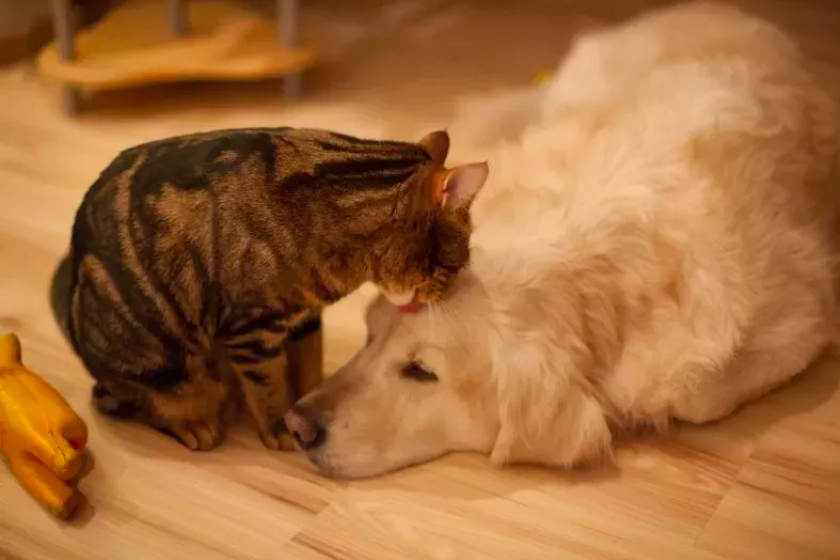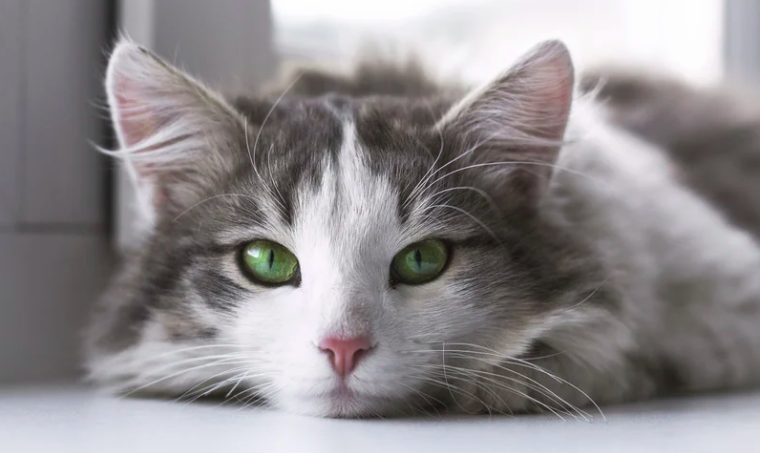Cats
Blood In My Cat’s Poop: Understanding The Causes And Solutions

Blood In My Cat’s Poop: Understanding The Causes And Solutions
As a cat owner, you may become alarmed if you notice blood in your cat’s poop. This symptom, known as hematochezia, can indicate a variety of underlying conditions.
While some cases may be minor, others may require urgent veterinary attention. Understanding the causes and potential solutions for blood in your cat’s poop can help you ensure your cat’s overall health and well-being.
Blood in your cat’s feces is not only distressing to witness but can also be a sign of a serious health problem.
It can indicate a wide range of issues, from minor infections to more severe conditions such as cancer. In this article, we’ll explore the possible causes of blood in a cat’s poop and what you can do to address this issue.
Understanding the Different Types of Blood in Cat Feces
Before delving into the causes of blood in cat feces, it’s essential to understand the different types of blood that can be present. The appearance of the blood can give valuable insights into the underlying issue.
Hematochezia
Hematochezia is the presence of fresh, bright red blood in your cat’s feces. This type of blood is often an indication of a problem in the lower digestive tract, such as the colon or rectum.
Hematochezia is a medical term that refers to the presence of fresh blood in a cat’s feces. It can be a symptom of a variety of underlying health conditions, ranging from minor to severe.
Understanding the different types of blood in cat feces can provide insight into the possible causes and help guide appropriate treatment.
Bright red blood: If the blood in a cat’s feces appears bright red, it is likely coming from the lower part of the digestive tract, such as the rectum or anus. This may be caused by conditions such as anal gland infections, rectal injuries, or constipation.
Dark, tarry blood: If the blood in a cat’s feces appears dark and tarry, it may be coming from the upper part of the digestive tract, such as the stomach or small intestine. This may be caused by conditions such as gastrointestinal ulcers or cancer.
Small streaks of blood: If a cat’s feces contains only small streaks of blood, this may be a sign of minor irritation or inflammation in the digestive tract, such as from a dietary change or infection.
Large amounts of blood: If a cat’s feces contains large amounts of blood or appears to be mostly blood, this may be a sign of a more serious condition, such as inflammatory bowel disease or parasites.
It is important to note that any presence of blood in a cat’s feces should be evaluated by a veterinarian, as it can indicate a serious underlying health condition.
A thorough physical examination, along with diagnostic tests such as bloodwork and fecal analysis, can help determine the cause of the hematochezia and guide appropriate treatment.
Melena
Melena, on the other hand, is the presence of dark, tarry feces. This type of blood is a sign of a problem in the upper digestive tract, such as the stomach or small intestine.
Melena is a medical term used to describe dark, tarry stools in cats that contain partially digested blood.
Unlike bright red blood in the feces, which typically indicates bleeding in the lower digestive tract, melena suggests that the bleeding is occurring in the upper digestive tract, such as the stomach or small intestine.
Melena can be caused by a variety of underlying health conditions, including gastrointestinal ulcers, cancer, or ingestion of certain medications or toxins. It is important to note that melena is a serious symptom and requires immediate veterinary attention.
Other symptoms that may accompany melena in cats include vomiting, diarrhea, lethargy, and decreased appetite.
A veterinarian will typically perform a physical examination, bloodwork, and fecal analysis to help diagnose the underlying cause of the melena. Additional diagnostic tests, such as imaging or endoscopy, may also be necessary.
Treatment for melena in cats will depend on the underlying cause. This may involve medications to help heal ulcers, dietary changes, or surgery in cases of cancer.
In severe cases, hospitalization and blood transfusions may be necessary to stabilize the cat. Early diagnosis and treatment are important for improving the cat’s prognosis and overall outcome.
Common Causes of Blood in Cat Feces
Blood in cat feces can be caused by a variety of underlying health conditions. Some common causes of blood in cat feces include:
- Parasites: Parasites such as hookworms, roundworms, or whipworms can cause irritation and inflammation in the digestive tract, leading to the presence of blood in the feces.
- Inflammatory bowel disease (IBD): IBD is a condition in which the digestive tract becomes inflamed, leading to symptoms such as diarrhea, vomiting, and weight loss. Blood in the feces can be a common symptom of IBD in cats.
- Colitis: Colitis is inflammation of the large intestine that can be caused by infections, stress, or dietary changes. This can lead to the presence of blood in the feces.
- Constipation: Straining during bowel movements due to constipation can cause irritation and bleeding in the rectal area, leading to the presence of blood in the feces.
- Dietary intolerance or allergy: Certain cat food or ingredients in a cat’s diet can cause inflammation in the digestive tract, leading to symptoms such as vomiting, diarrhea, and blood in the feces.
- Trauma: Injuries to the rectum or anus can cause bleeding in the feces.
- Cancer: In rare cases, blood in cat feces can be a symptom of gastrointestinal cancer.
- Infections: Bacterial or viral infections can also cause inflammation and bleeding in the intestines, resulting in blood in your cat’s feces.
It is important to note that any presence of blood in a cat’s feces should be evaluated by a veterinarian, as it can indicate a serious underlying health condition.
A thorough physical examination, along with diagnostic tests such as bloodwork and fecal analysis, can help determine the cause of the blood in the feces and guide appropriate treatment.
Diagnosing the Cause of Blood in Cat Feces
If you suspect that your cat has blood in its feces, it’s important to take them to the vet as soon as possible. The vet will perform a thorough examination and may run tests such as a fecal sample, blood work, and X-rays to determine the cause.
Diagnosing the underlying cause of blood in a cat’s feces typically involves a combination of physical examination, medical history review, and diagnostic testing.
During the physical examination, a veterinarian will assess the cat’s overall health and look for any signs of discomfort, such as pain or bloating in the abdominal area. They may also perform a rectal exam to check for any signs of injury or inflammation.
The veterinarian will also review the cat’s medical history and ask about any recent dietary changes, medications, or other potential triggers for the presence of blood in the feces.
Diagnostic testing may include:
- Fecal analysis: A fecal analysis can help identify the presence of parasites or other abnormalities in the digestive tract.
- Bloodwork: Blood tests can help assess the cat’s overall health and check for any signs of infection, inflammation, or anemia.
- Imaging: X-rays or ultrasounds can be used to examine the digestive tract and identify any abnormalities or signs of inflammation.
- Endoscopy: Endoscopy involves inserting a small camera into the digestive tract to directly visualize any abnormalities, such as ulcers or tumors.
- Biopsy: A tissue sample may be taken during endoscopy or surgery to help diagnose conditions such as inflammatory bowel disease or cancer.
Once a diagnosis has been made, treatment will depend on the underlying cause of the blood in the feces. This may include medications, dietary changes, or surgery in cases of cancer or other serious conditions.
Regular follow-up appointments with a veterinarian will be necessary to monitor the cat’s progress and adjust treatment as needed.
Treating Blood in Cat Feces
The treatment for blood in your cat’s feces will depend on the underlying cause. For example, if the cause is a parasite, the vet may prescribe a deworming medication.
If the cause is a bacterial infection, antibiotics may be prescribed. In more severe cases, such as cancer, surgery may be necessary.
In many cases, addressing the underlying condition will help resolve the presence of blood in the feces. Treatment options may include:
- Parasite control: If parasites are the cause of the blood in the feces, the cat may be given medication to eliminate the parasites.
- Medications: Anti-inflammatory medications or antibiotics may be prescribed to address conditions such as inflammatory bowel disease or colitis.
- Dietary changes: Switching to a high-quality, easily digestible diet may help reduce inflammation in the digestive tract.
- Surgery: In cases of cancer or other serious conditions, surgery may be necessary to remove tumors or other abnormalities.
- Fluid therapy: If the cat is dehydrated or has lost blood, fluid therapy or blood transfusions may be necessary to stabilize the cat.
It is important to closely follow the veterinarian’s instructions for treatment and monitor the cat for any changes in symptoms or behavior. In some cases, additional diagnostic testing or adjustments to the treatment plan may be necessary.
Regular follow-up appointments with a veterinarian are important to monitor the cat’s progress and ensure the underlying condition is properly managed.
Prevention of Blood in Cat Feces
To prevent blood in your cat’s feces, it’s essential to maintain a healthy diet and keep your cat up to date on preventative care, such as parasite control and vaccinations. Regular vet check-ups can also help to catch any potential issues early on.
Preventing blood in a cat’s feces involves addressing the underlying causes of the condition. Here are some tips to help prevent blood in cat feces:
- Regular veterinary care: Regular wellness exams with a veterinarian can help detect health issues early and prevent conditions that can lead to blood in the feces.
- Parasite control: Preventative medications can help control parasites such as worms or fleas, which can lead to inflammation in the digestive tract.
- Diet: Feeding your cat a high-quality diet that is easy to digest can help prevent inflammation in the digestive tract.
- Hydration: Make sure your cat has access to fresh, clean water at all times to prevent dehydration, which can cause constipation and straining during bowel movements.
- Stress reduction: Stress can contribute to digestive issues, so providing a calm, comfortable environment for your cat and minimizing stressors can help prevent digestive problems.
- Regular exercise: Regular exercise can help prevent constipation and promote healthy digestion in cats.
- Avoid human food: Avoid giving your cat human foods, which can cause digestive upset and potentially lead to blood in the feces.
It’s important to consult with a veterinarian if you notice any changes in your cat’s bowel habits or the presence of blood in the feces, as early detection and treatment can prevent more serious health issues.
Conclusion
Blood in your cat’s feces can be a sign of a serious health issue and should not be ignored. Understanding the different types of blood and common causes can help you to get a better understanding of the issue.
If you suspect that your cat has blood in its feces, it’s important to take them to the vet as soon as possible for proper diagnosis and treatment.
Questions People Also Ask: (FAQs)
What is hematochezia?
Hematochezia is the presence of fresh, bright red blood in your cat’s feces and is often an indication of a problem in the lower digestive tract.
What is melena?
Melena is the presence of dark, tarry feces and is a sign of a problem in the upper digestive tract.
What is inflammatory bowel disease (IBD)?
Inflammatory bowel disease is a chronic condition that results in inflammation in the digestive tract and can cause bleeding and result in blood in your cat’s feces.
Can parasites cause blood in my cat’s poop?
Yes, parasites such as roundworms and tapeworms can cause irritation and inflammation in the intestines, leading to blood in the feces.
Can infections cause blood in my cat’s poop?
Yes, bacterial or viral infections can also cause inflammation and bleeding in the intestines, resulting in blood in your cat’s feces.
Is cancer a cause of blood in my cat’s poop?
Yes, cancer of the digestive tract can also be a cause of blood in your cat’s feces.
How is the cause of blood in my cat’s poop diagnosed?
If you suspect that your cat has blood in its feces, it’s important to take them to the vet as soon as possible. The vet will perform a thorough examination and may run tests such as a fecal sample, blood work, and X-rays to determine the cause.
What is the treatment for blood in my cat’s poop?
The treatment for blood in your cat’s feces will depend on the underlying cause. For example, if the cause is a parasite, the vet may prescribe a deworming medication. If the cause is a bacterial infection, antibiotics may be prescribed. In more severe cases, such as cancer, surgery may be necessary.
How can I prevent blood in my cat’s poop?
To prevent blood in your cat’s feces, it’s essential to maintain a healthy diet and keep your cat up to date on preventative care, such as parasite control and vaccinations. Regular vet check-ups can also help to catch any potential issues early on.
What should I do if I suspect my cat has blood in its poop?
If you suspect that your cat has blood in its feces, it’s important to take them to the vet as soon as possible for proper diagnosis and treatment. Ignoring the issue could lead to more severe health problems down the road.
We appreciate you for taking the time to read this article!
Finally, we hope you found this article interesting? And what do you think about ”Blood In My Cat’s Poop: Understanding The Causes And Solutions!?”
Please feel free to share or inform your friends about this article and this site, thanks!
And let us know if you observe something that isn’t quite right.
Cats
Clever Cats: Breeds That Learn Fast
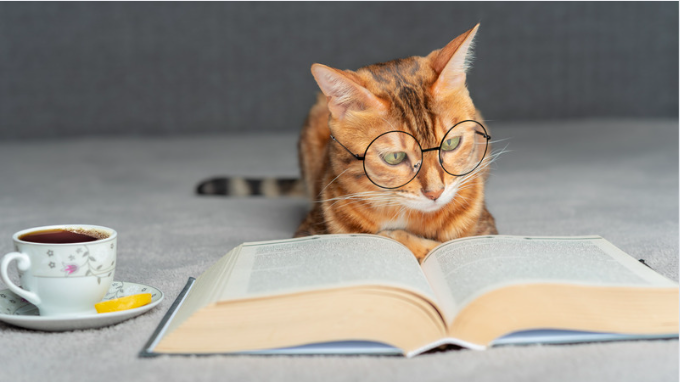
Clever Cats: Breeds That Learn Fast
Cats have always fascinated us with their agility, independence, and sometimes enigmatic behavior. Among the vast array of feline breeds, some stand out for their remarkable intelligence and ability to learn quickly.
In this article, we will delve into the world of these exceptional cat breeds, exploring their unique characteristics, training capabilities, and what makes them such quick learners.
Whether you’re a seasoned cat owner or considering adopting a new feline friend, this comprehensive guide will help you understand the breeds that are not only intelligent but also a joy to train.
Why Intelligence Matters in Cats
Understanding Feline Intelligence
Feline intelligence is a multi-faceted trait that encompasses problem-solving abilities, social learning, and adaptability. Unlike dogs, cats often showcase their intelligence in more subtle ways, such as manipulating objects to get what they want or learning routines and commands.
Benefits of Owning Intelligent Cats
Owning an intelligent cat comes with several benefits. These cats are more interactive and engaging, making them excellent companions. They can learn tricks, follow commands, and even understand basic household rules, which makes living with them more enjoyable and less challenging.
Top Cat Breeds Known for Their Intelligence
Abyssinian
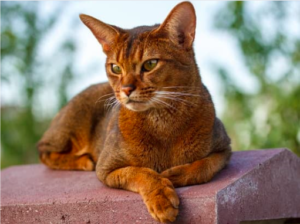
Overview
The Abyssinian is often hailed as one of the smartest cat breeds. Known for their curiosity and playful nature, Abyssinians are quick learners who thrive on mental stimulation.
Training and Activities
Abyssinians are highly trainable and enjoy interactive toys and puzzle feeders. They can learn tricks such as fetching and even walking on a leash. Their love for heights means they appreciate cat trees and climbing structures.
Siamese
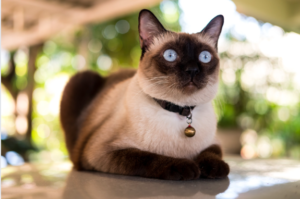
Overview
Siamese cats are not only intelligent but also highly vocal and sociable. They form strong bonds with their owners and are always eager to engage in activities.
Training and Activities
Siamese cats are quick to learn tricks and commands. They enjoy interactive play and can be trained to perform simple tasks like opening doors or retrieving items. Their vocal nature also makes them responsive to verbal cues.
Bengal
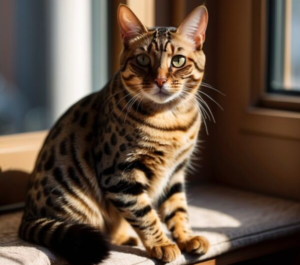
Overview
Bengals are known for their striking appearance and high energy levels. Their intelligence is reflected in their ability to solve problems and learn complex tasks.
Training and Activities
Bengals enjoy activities that challenge their minds, such as agility courses and puzzle toys. They can be trained to walk on a leash and perform tricks. Providing them with interactive playtime helps in channeling their energy positively.
Burmese
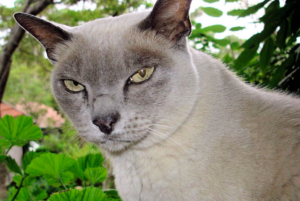
Overview
Burmese cats are affectionate, people-oriented, and intelligent. They enjoy being involved in family activities and can be trained to follow various commands.
Training and Activities
Burmese cats are quick learners and respond well to positive reinforcement. They enjoy learning tricks, playing fetch, and interactive games that stimulate their minds.
Scottish Fold
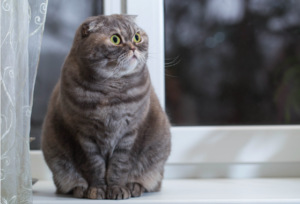
Overview
Scottish Folds are known for their distinctive folded ears and sweet demeanor. Despite their calm appearance, they are intelligent and can learn quickly.
Training and Activities
Scottish Folds enjoy interactive toys and games. They can learn tricks and commands and appreciate routines that keep their minds engaged.
Training Tips for Intelligent Cats
Start Early
Begin training your cat as early as possible. Kittens are more receptive to learning new behaviors and routines.
Use Positive Reinforcement
Reward your cat with treats, praise, or playtime whenever they successfully perform a desired behavior. Positive reinforcement strengthens the association between the action and the reward.
Keep Sessions Short and Fun
Cats have shorter attention spans than dogs, so keep training sessions brief and enjoyable. Incorporate playtime to make learning fun for your cat.
Be Patient and Consistent
Patience and consistency are key when training cats. Repeat commands and routines regularly, and avoid punishing your cat for mistakes. Consistency helps reinforce learning and builds trust.
Challenges of Training Intelligent Cats
Independence and Stubbornness
Intelligent cats can sometimes be independent and stubborn. They might choose to ignore commands if they are not in the mood, so it’s important to understand their behavior and work with it.
Need for Mental Stimulation
Highly intelligent cats require constant mental stimulation. Boredom can lead to behavioral issues, so ensure they have plenty of toys, activities, and interaction to keep their minds engaged.
Managing High Energy Levels
Breeds like Bengals have high energy levels that need to be managed. Providing them with enough physical and mental exercise is crucial to prevent destructive behavior.
Living with Intelligent Cats
Creating an Enriched Environment
An enriched environment is essential for intelligent cats. This includes a variety of toys, climbing structures, scratching posts, and interactive feeders to keep them stimulated.
Social Interaction
Intelligent cats thrive on social interaction. Spend quality time playing, training, and simply bonding with your cat to ensure they feel valued and engaged.
Understanding Their Needs
Each intelligent breed has its own unique needs and preferences. Understanding these and catering to them will help you build a strong and positive relationship with your cat.
Conclusion
Owning an intelligent cat can be an incredibly rewarding experience. These quick learners bring joy, challenge, and companionship to their owners. By understanding their unique characteristics and providing the right environment and training, you can foster a deep and fulfilling relationship with your feline friend.
Whether you choose an Abyssinian, Siamese, Bengal, Burmese, or Scottish Fold, you’re sure to enjoy the remarkable intelligence and personality they bring into your home.
Frequently Asked Questions (FAQs)
What makes a cat breed intelligent?
Intelligent cat breeds often show high levels of problem-solving abilities, adaptability, and social learning. They can quickly learn commands, tricks, and routines.
Can all cats be trained?
While some breeds are more receptive to training than others, all cats can be trained to some extent. Patience, consistency, and positive reinforcement are key to successful training.
What are the best toys for intelligent cats?
Interactive toys, puzzle feeders, and climbing structures are ideal for intelligent cats. These toys provide mental stimulation and keep them engaged.
How do I keep my intelligent cat from getting bored?
Provide a variety of toys, engage in regular playtime, and introduce new activities regularly. Rotating toys and creating an enriched environment also help prevent boredom.
Are intelligent cats more difficult to care for?
Intelligent cats can be more demanding in terms of mental stimulation and interaction. However, with the right approach and environment, they can be delightful companions.
We appreciate you for taking the time to read this article!
Finally, we hope you found this article interesting? And what do you think about ”Clever Cats: Breeds That Learn Fast!?”
Please feel free to share or inform your friends about this article and this site, thanks!
And let us know if you observe something that isn’t quite right.
Cats
The Enchanting Scottish Fold: A Guide to the Adorable Feline with Folded Ears
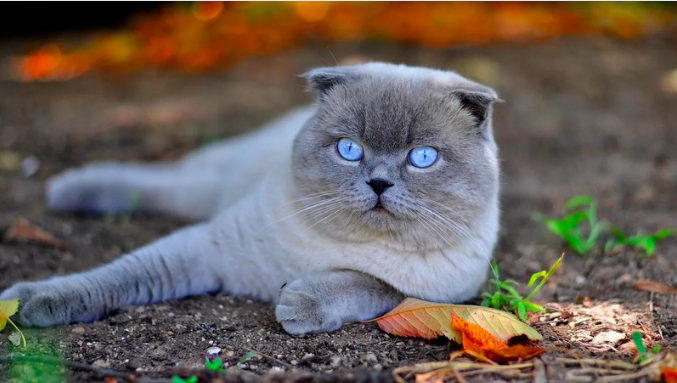
The Enchanting Scottish Fold: A Guide to the Adorable Feline with Folded Ears
Welcome to the world of the Scottish Fold cat, where charm and curiosity meet in an irresistibly adorable package. With their distinctive folded ears and sweet expression, Scottish Folds have captured the hearts of cat lovers around the world. Originally hailing from Scotland, these cats are known for their gentle demeanor, playful nature, and loving personality.
In this comprehensive guide, we will delve into the fascinating world of Scottish Fold cats, exploring their history, physical characteristics, personality traits, and care requirements. Whether you’re a seasoned cat owner or considering adding a feline friend to your family, the Scottish Fold’s unique charm and affectionate nature make them a delightful addition to any home. Join us as we unravel the enchanting tale of the Scottish Fold cat and discover why they are such beloved companions.
Fold
Overview
The Scottish Fold cat is a charming and distinctive breed known for its unique folded ears and sweet expression. Originating from Scotland in the 1960s, these cats have captured the hearts of many with their endearing appearance and affectionate nature. Scottish Folds are known for their gentle and loving temperament, making them wonderful companions for families and individuals alike.
History and Origins
The Scottish Fold breed traces its roots back to a white barn cat named Susie, who was found in Scotland in the early 1960s. Susie had a unique genetic mutation that caused her ears to fold forward, giving her an owl-like appearance. This trait was passed down to her kittens, and thus, the Scottish Fold breed was born. The breed quickly gained popularity for its distinctive look and friendly demeanor, and it was officially recognized by cat registries in the 1970s.
Physical Characteristics
- Folded Ears: The most distinctive feature of the Scottish Fold is its folded ears, which give the cat a sweet and owl-like appearance. Not all Scottish Folds have folded ears; some may have straight ears, known as “straights,” which are also common in the breed.
- Coat and Colors: Scottish Folds can have either a short or long coat, both of which are dense and plush. They come in a variety of colors and patterns, including tabby, tortoiseshell, and solid colors like white, black, and blue.
- Body Structure: Scottish Folds are medium-sized cats with a rounded appearance. They have sturdy bodies, round faces, and large, expressive eyes that give them a sweet and gentle expression.
Personality and Behavior
Scottish Folds are known for their calm and laid-back demeanor. They are affectionate cats that enjoy being around people and are often described as “lap cats” due to their love of cuddling. They are also known for their playful nature and enjoy interactive toys and games. Scottish Folds are generally good with children and other pets, making them a great choice for families.

Health and Care
- Ear Care: Due to their folded ears, Scottish Folds may be prone to ear infections. It’s important to regularly check and clean their ears to prevent issues.
- Grooming: Scottish Folds have dense coats that require regular grooming to prevent matting and tangling. Weekly brushing is usually sufficient to keep their coat in good condition.
- Health Concerns: Scottish Folds are generally healthy, but they may be prone to certain genetic conditions, including a skeletal disorder known as osteochondrodysplasia. Responsible breeding practices can help minimize the risk of these health issues.
Training and Activities
Scottish Folds are intelligent cats that can be trained to perform tricks and commands. They enjoy interactive play and benefit from toys that stimulate their minds and bodies. Providing them with scratching posts and other outlets for their natural behaviors can help keep them happy and healthy.
Compatibility with Families and Other Pets
Scottish Folds are known for their gentle and affectionate nature, making them great companions for families. They are good with children and other pets, including dogs, and can adapt well to different environments. Their loving and sociable nature makes them a popular choice for households looking for a friendly and affectionate pet.
Conclusion
The Scottish Fold cat is a unique and charming breed known for its folded ears and sweet expression. With their gentle demeanor and affectionate nature, Scottish Folds make wonderful companions for families and individuals alike. Whether you’re looking for a lap cat to cuddle with or a playful friend to keep you entertained, the Scottish Fold cat is sure to bring joy and companionship to your home.
FAQs about Scottish Fold Cats
Why do Scottish Folds have folded ears?
Scottish Folds have a genetic mutation that affects the cartilage in their ears, causing them to fold forward. This unique trait gives them their distinctive appearance.
Are Scottish Folds prone to ear problems due to their folded ears?
Yes, Scottish Folds may be more prone to ear infections due to the fold in their ears, which can trap dirt and moisture. Regular cleaning and monitoring of their ears can help prevent issues.
Do Scottish Folds have any health issues associated with their folded ears?
Scottish Folds may be prone to a condition called osteochondrodysplasia, which affects the development of their cartilage and bones. Responsible breeding practices can help reduce the risk of this condition.
Are Scottish Folds good with children and other pets?
Scottish Folds are known for their gentle and friendly nature, making them good companions for families with children and other pets. They enjoy socializing and being part of the family.
Do Scottish Folds require a lot of grooming?
Scottish Folds have dense coats that require regular grooming to prevent matting and tangles. Weekly brushing is recommended to keep their coat in good condition.
We appreciate you for taking the time to read this article!
Finally, we hope you found this article interesting? And what do you think about ”The Enchanting Scottish Fold: A Guide to the Adorable Feline with Folded Ears!?”
Please feel free to share or inform your friends about this article and this site, thanks!
And let us know if you observe something that isn’t quite right.
Cats
The Enchanting Burmese Cat: Affectionate, Playful, and Loyal
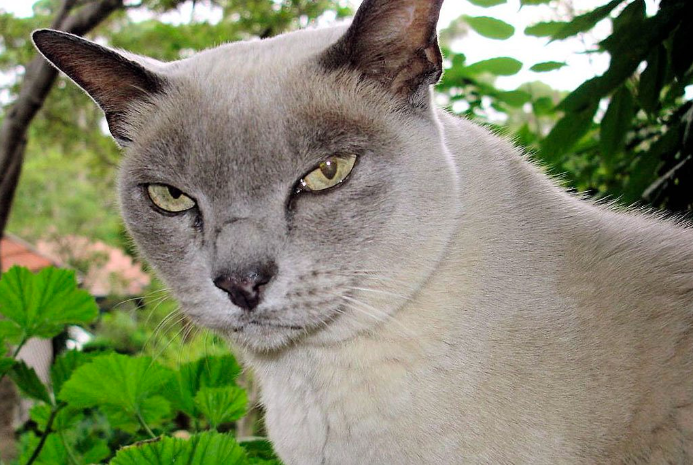
The Enchanting Burmese Cat: Affectionate, Playful, and Loyal
Enter the world of the Burmese cat, where elegance meets affection in a charming feline companion. Originating from the temples of Burma, these cats have captured the hearts of cat lovers worldwide with their striking appearance and loving nature. With their sleek coats, expressive eyes, and playful demeanor, Burmese cats are not just pets; they are cherished members of the family.
In this comprehensive guide, we delve into the captivating world of Burmese cats, exploring their history, physical characteristics, personality traits, and care requirements. Whether you’re a seasoned cat owner or considering adding a feline friend to your family, the Burmese cat’s unique blend of beauty, intelligence, and affection is sure to captivate you. Join us as we unravel the enchanting tale of the Burmese cat and discover why they are such beloved companions.
Burmese
Overview
The Burmese cat is a breed known for its striking appearance and affectionate nature. Originating from Burma (now Myanmar), these cats are renowned for their sleek, muscular bodies, expressive eyes, and silky coats. Burmese cats are often described as “people-oriented,” as they form strong bonds with their human companions and enjoy being part of the family. Their playful and curious nature makes them delightful companions for both children and adults alike.
History and Origins
The history of the Burmese cat can be traced back to ancient Burma, where they were considered sacred and kept by monks in temples. They were later brought to the West in the early 20th century and quickly gained popularity for their striking appearance and affectionate personality. The breed has since become a favorite among cat enthusiasts worldwide, known for its loving and loyal nature.
Physical Characteristics
- Coat and Colors: Burmese cats have short, sleek coats that lie close to the body. They come in a variety of colors, including sable, champagne, blue, and platinum. The coat is soft and silky to the touch, adding to the breed’s overall charm.
- Body Structure: Burmese cats are medium-sized with a muscular build. They have rounded heads, large, expressive eyes, and short, straight noses. Their compact bodies give them a sturdy appearance, and they move with grace and agility.
- Eyes and Ears: Their eyes are one of their most striking features, being large, expressive, and usually a deep, rich color that complements their coat. Their ears are medium-sized, slightly rounded at the tips, and set wide apart on the head.
Personality and Behavior
Burmese cats are known for their affectionate and sociable nature. They are often described as “dog-like” due to their tendency to follow their owners around the house and seek out human companionship. They are also highly intelligent and enjoy interactive play, making them great companions for families with children or other pets.
In addition to their affectionate nature, Burmese cats are also known for their vocalizations. They have a soft, sweet voice that they use to communicate with their owners, often engaging in “conversations” and expressing their needs and desires.
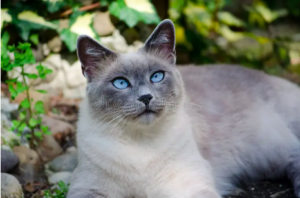
Health and Care
- Grooming: Burmese cats have short coats that require minimal grooming. Weekly brushing is usually sufficient to remove loose hair and keep their coat shiny. They also benefit from regular dental care to prevent oral health issues.
- Diet: A high-quality, balanced diet is essential for maintaining the health and vitality of Burmese cats. They should be fed a diet that is appropriate for their age, size, and activity level to ensure they receive the nutrients they need.
- Health Concerns: Burmese cats are generally healthy, but they can be prone to certain genetic conditions such as hypertrophic cardiomyopathy (HCM) and diabetes. Regular veterinary check-ups and a healthy diet can help manage these risks.
Training and Activities
Burmese cats are intelligent and can be trained to perform various tricks and commands. They enjoy interactive play and thrive on mental stimulation. Providing them with toys, puzzle feeders, and opportunities for play can help keep them entertained and prevent boredom.
Compatibility with Families and Other Pets
Burmese cats are known for their loving and social nature, making them great companions for families. They get along well with children and other pets, including dogs, as long as they are properly introduced. Their affectionate demeanor and playful nature make them a popular choice for households looking for a friendly and engaging pet.
Conclusion
The Burmese cat is a breed beloved for its affectionate nature, striking appearance, and playful personality. Whether you are looking for a loyal companion or a playful friend, the Burmese cat is sure to bring joy and warmth to your home. With their loving nature and sociable demeanor, Burmese cats make wonderful pets for families and individuals alike, enriching their lives with their presence and affection.
FAQs about Burmese Cats
What is the temperament of a Burmese cat like?
Burmese cats are known for their affectionate and social nature. They are often described as “dog-like” due to their loyalty and tendency to follow their owners around the house. They enjoy being involved in family activities and form strong bonds with their human companions.
Are Burmese cats good with children and other pets?
Yes, Burmese cats are generally good with children and other pets. They are playful and enjoy interactive play, making them great companions for families with children. They also get along well with other pets, including dogs, especially if they are introduced properly.
Do Burmese cats require a lot of grooming?
Burmese cats have short, sleek coats that require minimal grooming. Weekly brushing is usually sufficient to remove loose hair and keep their coat shiny. They also benefit from regular dental care to prevent oral health issues.
Are Burmese cats vocal?
Burmese cats are known for their soft, sweet voice, but they are not excessively vocal. They use their voice to communicate with their owners, often engaging in “conversations” and expressing their needs and desires.
What kind of environment is best for a Burmese cat?
Burmese cats thrive in environments where they have plenty of opportunities for play and interaction. They enjoy being part of the family and should have access to toys, scratching posts, and other enrichment activities. They also enjoy having access to outdoor enclosures or safe outdoor spaces where they can explore and indulge their natural instincts.
We appreciate you for taking the time to read this article!
Finally, we hope you found this article interesting? And what do you think about ”The Enchanting Burmese Cat: Affectionate, Playful, and Loyal!?”
Please feel free to share or inform your friends about this article and this site, thanks!
And let us know if you observe something that isn’t quite right.
-

 Pet Care2 years ago
Pet Care2 years agoThe Best Dog Collars For 2022
-

 Dogs2 years ago
Dogs2 years agoBichon Frise: The Happy, Playful, and Cuddly Companion
-

 Trending Pet Stories1 year ago
Trending Pet Stories1 year ago2023 ‘World’s Ugliest Dog’ Winner: Scooter’s Tale of Resilience
-

 Animals2 years ago
Animals2 years agoAre There Animals Having Down Syndrome?
-

 Pets2 years ago
Pets2 years agoThe Fascinating World Of The Red Chameleon
-

 Dogs2 years ago
Dogs2 years agoTop 10 Most Popular Dog Breeds According To AKC.
-

 Dogs2 years ago
Dogs2 years ago21 Dog Breeds That Resemble Bears Or Teddy Bears!
-

 Dogs2 years ago
Dogs2 years agoEskimo Dogs from Canada – What Are They? – Find Out!


